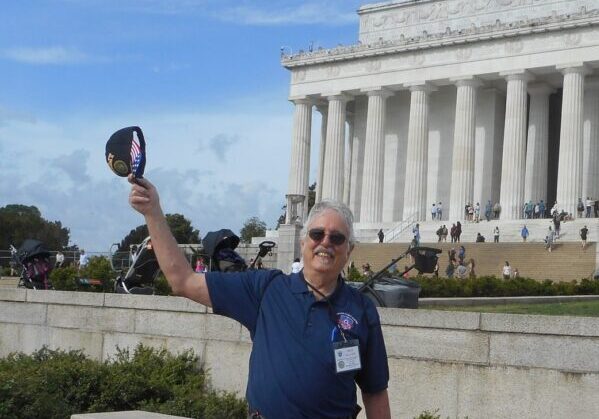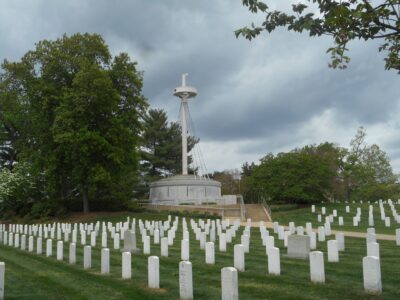
Memorial Day honors the men and women who died while serving in the U.S. military. What better way to observe the last Monday of May than to take a tour of our nation’s war memorials in the District of Columbia.

Historians will remember that British troops set fire to the White House in the War of 1812 (1812-1815). Across the street from the White House is a Statue of General Andrew Jackson as he appeared at the Battle of New Orleans. In this, the final major battle against the British, American forces consisted of free men of color, Choctaw volunteers, the U.S. Navy and Marines, militia from several southern states, and a pirate force under the command of Jean Lafitte.
The Indian Wars (approx. 1817-1898) can best be memorialized with a visit to the National Museum of the American Indian. An exhibit there in 2009 featured a hundred Peace Treaties – all of them broken by the U.S. Government. Adjacent to the museum is the National Native American Veterans Memorial. This tribute to Native heroes was dedicated last year to recognize the enduring and distinguished service of Native Americans in every branch of the U.S. military.
While there is no memorial in D.C. for the Mexican War (1846-1848), Ulysses S. Grant and Robert E. Lee both served in that conflict. The Ulysses S. Grant Memorial, at the eastern terminus of the National Mall, has been the site of countless demonstrations. And the Arlington House, atop the hill in the National Cemetery, serves as the Robert E. Lee Memorial.
The Civil War (1861-1865) is remembered around the district in a variety of ways. Indeed, Memorial Day (originally called Decoration Day) was first widely observed on May 30, 1868, to commemorate the sacrifices of Union soldiers. The Arlington Memorial Bridge over the Potomac River connects the Lincoln Memorial on the north with the Lee Memorial on the south.
A Confederate Memorial, complete with depictions of a ‘mammy’ figure holding a white baby and a slave marching off to war with his master, sits within Arlington National Cemetery. The African American Civil War Memorial, dedicated in 1998, honors the sacrifice of the 200,000 former slaves who served in the Army and Navy during the Civil War. Their efforts helped to end slavery and shortened the war. In 2009, President Barack Obama sent a wreath to both memorials.

Although the Potomac River is at the bottom of the hill, a ship’s mast rises against the skyline near the Tomb of the Unknown Soldier. The Mast of the Maine was removed from the ship after the war and honors those who lost their lives when the ship sank in Havana Harbor, the event that started the Spanish-American War.
World War I (1917-1918) is remembered in the District of Columbia War Memorial. Local residents wanted to honor the 26,000 Washingtonians who served in the Great War and the 499 D.C. citizens who lost their lives. This Doric Temple, dedicated by Herbert Hoover on Armistice Day in 1931, was the first war memorial to be erected in West Potomac Park.

World War II (1941 –1945) was celebrated with parades and speeches when it ended but it was not until Memorial Day 2004 that the World War II Memorial was dedicated. Two pavilions represent the Atlantic and Pacific theaters of war. The Rainbow Pool, a feature before the memorial was constructed, is now surrounded by 56 pillars to symbolize the states and territories of the U.S. Bas relief panels convey the story of the war, a synopsis for those who remember remembering and an introduction for neophytes.

In 2022, a Wall of Remembrance was added that features the names of the more than 43,000 U.S. service members and Korean augmentees who were killed during the war. Words on the plaza help us remember, “Our nation honors her sons and daughters who answered the call to defend a country they never knew and a people they never met.”



XXX
all images courtesy of author
